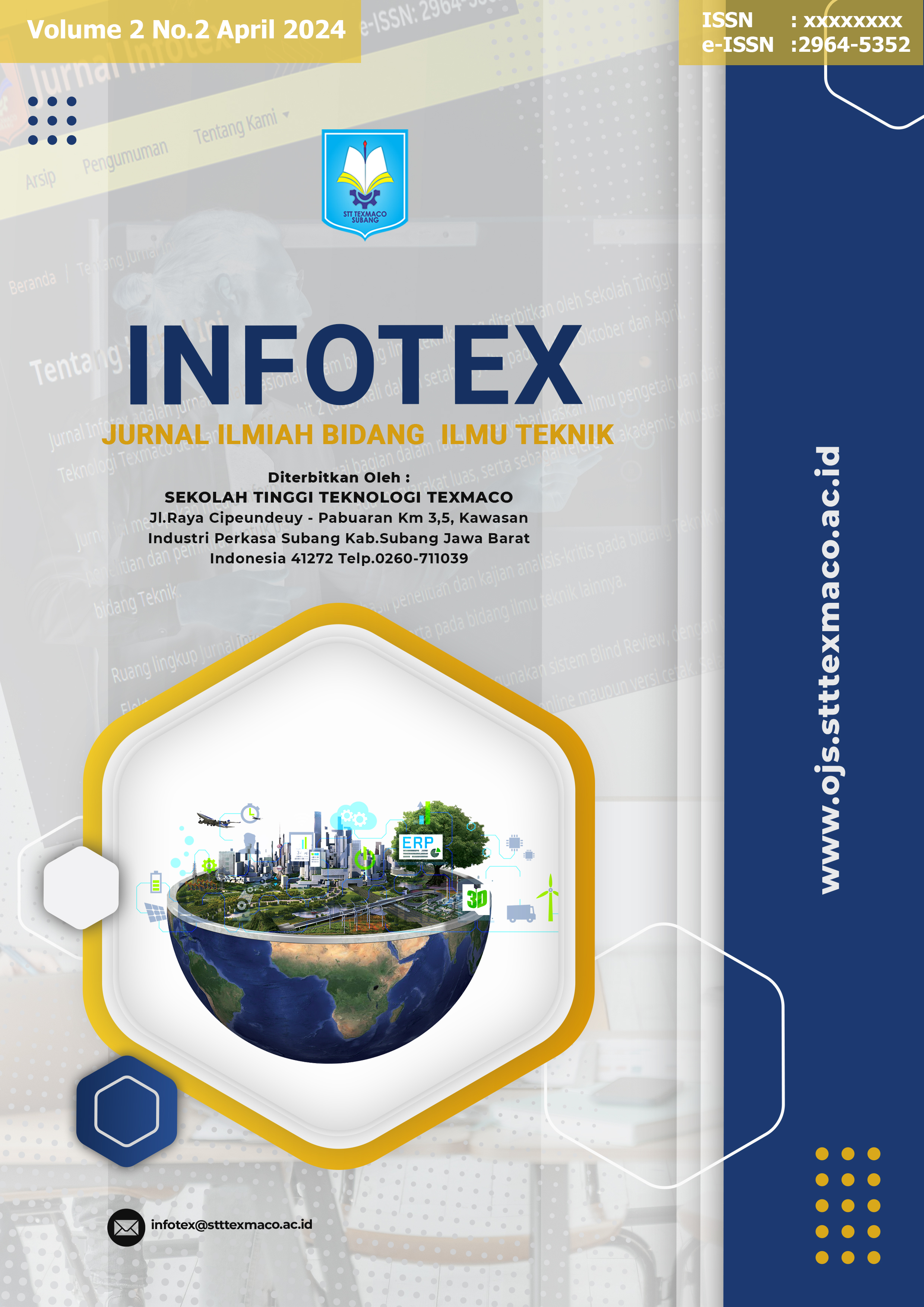Rancang Bangun Alat Pemilah Sampah Organik Dan Anorganik Otomatis Berbasis Arduino Uno Untuk Kantin STT Texmaco Subang
Keywords:
Gerbage, Arduino, Prximity, Infrared, UltrasonikAbstract
The advancement of sensor and microcontroller technology in the era of globalization has a positive and significant impact on improving the quality of daily life. This research is focused on the problem of waste management in the canteen of STT Texmaco Subang, where there is a situation that illustrates the real challenges in waste management. The waste generated in this canteen often includes a mixture of organic and inorganic waste. To address the problem, the author conducted a study to design an automatic waste sorting device using an Arduino UNO microcontroller and various types of sensors, including inductive Proximity sensors, capacitive Proximity, and Infrared sensors, to separate organic and inorganic waste. The utilization of an ultrasonic sensor to measure the fullness of the bin and a buzzer indicator when it reaches its maximum capacity provides an effective solution. Test results show that the device is able to identify the type of waste being disposed of, facilitating more efficient waste management in the canteen environment. Thus, this research makes a positive contribution in the effort to improve sustainability for the environment through technological innovation.
References
R. Ramadhan and N. feby Puspitasari, “Intelligent waste sorting prototype based internet of things,” vol. 10, no. 2, 2023.
R. Kustanti, A. Rezagama, B. S. Ramadan, S. Sumiyati, B. P. Samadikun, and M. Hadiwidodo, “Tinjauan Nilai Manfaat pada Pengelolaan Sampah Plastik Oleh Sektor Informal (Studi Kasus: Kecamatan Purwodadi, Kabupaten Grobogan),” J. Ilmu Lingkung., vol. 18, no. 3, pp. 495–502, 2020, doi: 10.14710/jil.18.3.495-502.
G. Hergika, Siswanto, and S. S, “Perancangan Internet of Things (Iot) Sebagai Kontrol Infrastuktur Dan Peralatan Toll Pada Pt. Astra Infratoll Road,” PROSISKO J. Pengemb. Ris. dan Obs. Sist. Komput., vol. 8, no. 2, pp. 86–98, 2021, doi: 10.30656/prosisko.v8i2.3862.
S. A. Sutarti, Tian Triyatna, “Prototype Sistem Absensi Siswa / I Dengan Menggunakan,” Prosisko, vol. 9, no. 1, pp. 76–85, 2022.
R. Tullah, A. H. Setyawan, and B. P. Tanah, “Sistem Penyiraman Tanaman Otomatis Berbasis Mikrokontroler Arduino Uno Pada Toko Tanaman Hias Yopi,” vol. 9, no. 1, 2019.
M. Yunus, “Rancang Bangun Prototipe Tempat Sampah Pintar Pemilah Sampah Organik Dan Anorganik Menggunakan Arduino,” Proceeding STIMA, vol. 1, no. 1, pp. 340–343, 2018.
D. Andriyani, E. Harahap, F. H. Badruzzaman, M. Y. Fajar, and D. Darmawan, “Aplikasi Microsoft Excel Dalam Penyelesaian Masalah Rata-rata Data Berkelompok,” Matematika, vol. 18, no. 1, pp. 41–46, 2019, doi: 10.29313/jmtm.v18i1.5078.
A. B. Afnenda, S. Sukoriyanto, and I. N. Parta, “Miskonsepsi Mahasiswa dalam Menyelesaikan Masalah Standar Deviasi Ditinjau dari Tipe Kepribadian Influence,” J. Cendekia J. Pendidik. Mat., vol. 7, no. 2, pp. 1469–1481, 2023, doi: 10.31004/cendekia.v7i2.2190.
A. Kurniawan, “Alat Bantu Jalan Sensorik bagi Tunanetra,” Inklusi, vol. 6, no. 2, p. 285, 2019, doi: 10.14421/ijds.060205.
D. Sasmoko, Arduino dan Sensor pada Project Arduino DIY. 2021.
M. L. Khoeri, “Mengenal Jenis-jenis Sensor dan Pemanfaatannya di Dunia Industri,” Academia.Edu, no. 1, pp. 1–29, 2021, [Online].
A. Ra’uf, A. Faisol, and F. Santi Wahyuni, “Penggunaaan Internet of Things (Iot) Alat Pendeteksi Logam Dan Non-Logam Pada Tempat Sampah Pintar,” JATI (Jurnal Mhs. Tek. Info
Downloads
Published
How to Cite
Issue
Section
License
Copyright (c) 2024 Achmad Anwari, Budi Sunarto, Ami Amelia

This work is licensed under a Creative Commons Attribution-ShareAlike 4.0 International License.






